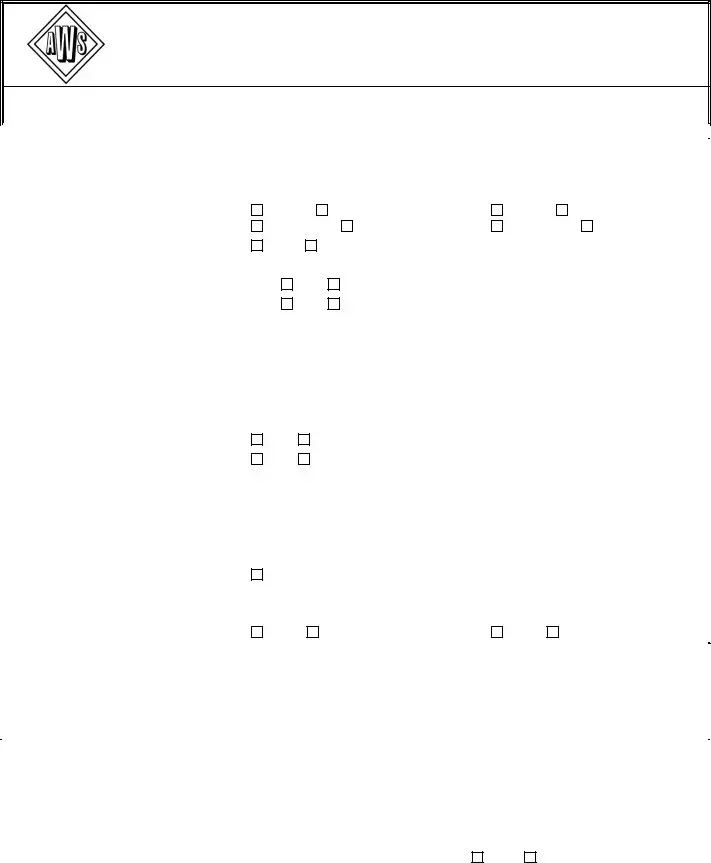The Welder Performance Qualification Record (WPQR) form is an essential document used in the welding industry to verify a welder's skills and qualifications. It captures critical information about the welder, including their name, identification numbers, and the specific test details related to their welding performance. The form outlines the variables associated with the qualification test, such as the welding process employed, the type of materials used, and the specific positions in which the welder is qualified to work. Additionally, it records mechanical test results and non-destructive examination outcomes, ensuring that the weld meets industry standards. The WPQR also includes a certification statement, affirming that all information is accurate and that the tests were conducted in compliance with established codes and specifications, such as AWS D1.1. This documentation serves not only as a record of a welder's capabilities but also as a tool for employers to assess the qualifications of their welding personnel, thereby enhancing workplace safety and quality assurance.

